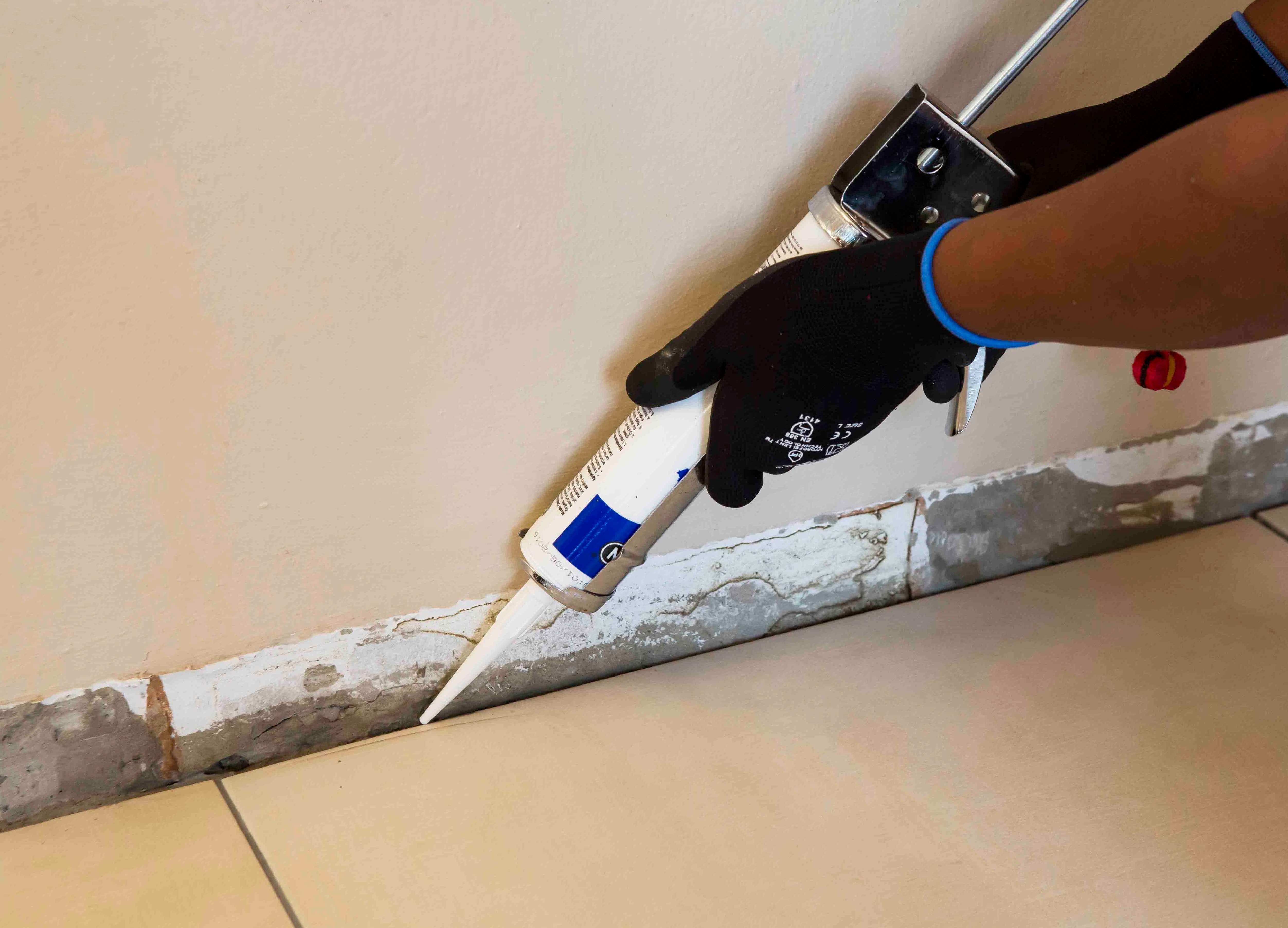Top tile trends from Cersaie 2015
The 32nd edition of Cersaie - the International Exhibition of Ceramic Tile and Bathroom Furnishings - which ran from 28 September to 2 October in Bologna, proved to be a treat for the senses, serving up a feast of pattern, colour, texture and geometry.
In this blog post, we will look at Architizer’s take on the biggest trends to come out Cersaie 2015. Architizer is one of the US’s leading digital resources for architects.
Architizer’s Cersaie 2015 Trend Round Up
According to Architizer, recurring themes were aplenty at the 2015 edition of Cersaie. Architizer notes that if one had to sum up the majority of the tile trends observed at Cersaie 2015 in just a few words, it would be ‘what is old is new, again’ with ‘new twists’ as a close second.
In either case, Architizer says that there were beautiful and innovative products to behold in just about every exhibit at Cersaie 2015, proving once more how far the tile manufacturing industry has come, both in its processes and technologies. Architizer’s pick of the top trends to come out of Cersaie 2015? Wood-, brick-, cement- and concrete-look tiles. Let’s take a look at each of these trends from the perspective of Architizer.
Wood-look tiles
The ‘faux bois' bandwagon of the tile industry started out with manufacturers just trying to flawlessly emulate woodgrain using inkjet printing. Then came the addition of texture to make these ceramic products appear — and feel — even more lifelike. In the last couple years, this realism has been achieved by a number of companies, leading them to ask “what else” could be done in wood simulation. At this year’s Cersaie, the answer for most of them turned out to be recreating weathered, distressed, reclaimed, and, even, painted and patterned woods.
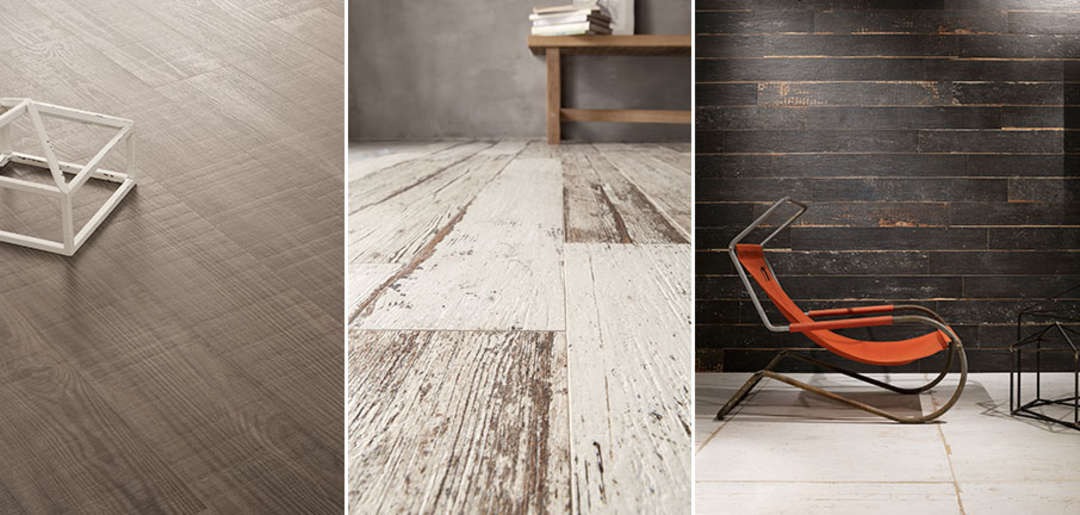

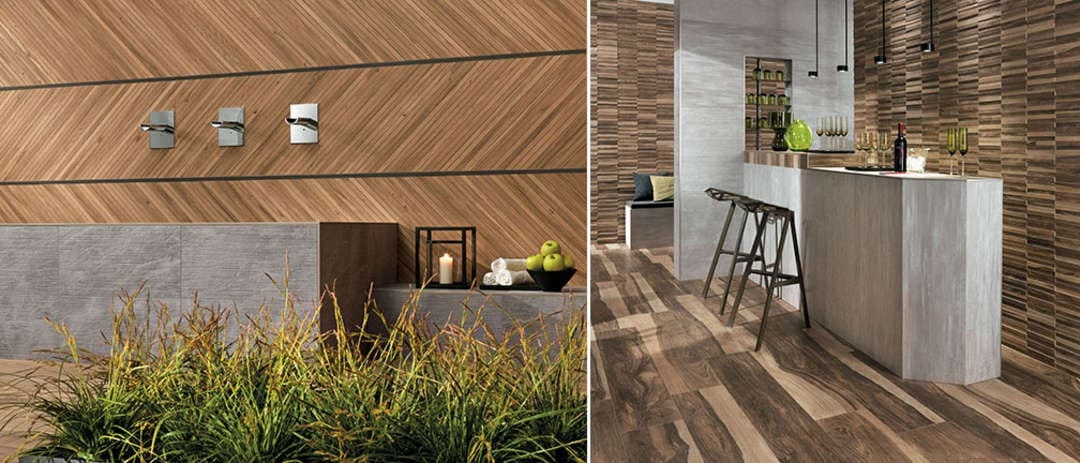

Brick-look tiles
Painted and distressed brick motifs appeared in several of the major Italian brands’ booths almost as frequently as the wood-look. Some were painted and even graffiti- or mural-emblazoned, while others had a reclaimed, industrial appearance evoking the exposed-brick walls often found lying behind drywall of urban buildings.
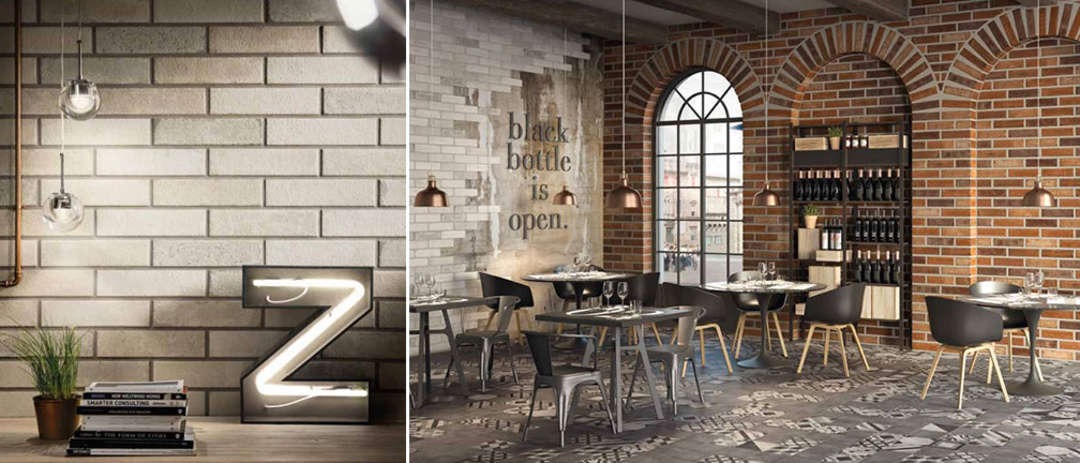

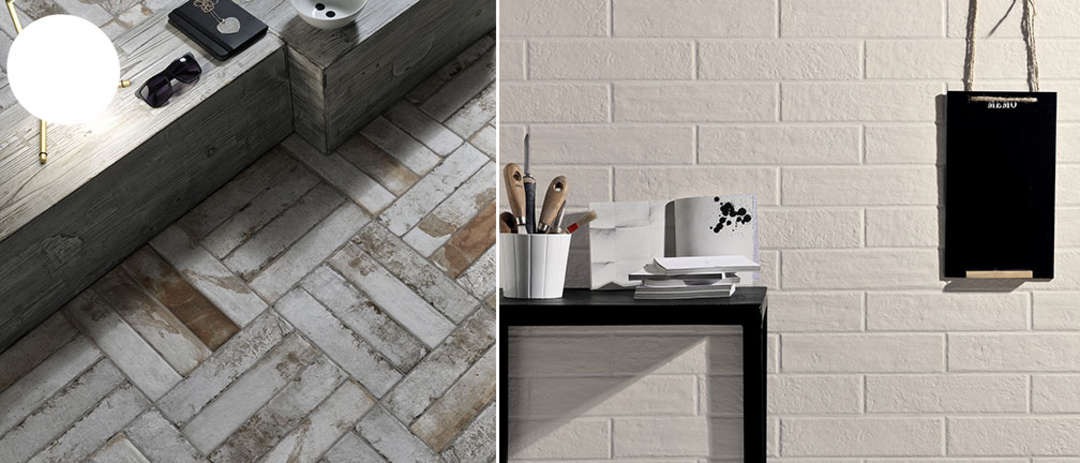

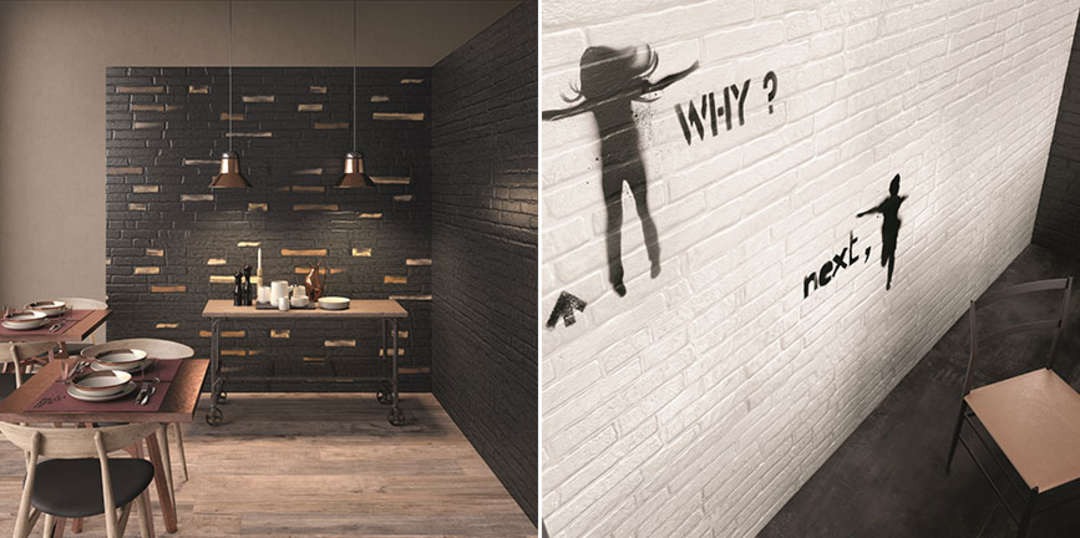

Concrete- and cement-look tiles
The trend toward emulating concrete and cement in porcelain stoneware doesn’t come as a surprise to anyone in the architecture and design community, given concrete’s overall popularity in the built environment - this, according to Architizer.
Many of the Italian tile houses at Cersaie 2015 displayed styles that ranged from the polished variety to the freshly troweled look - all of which proved to inject a bit of ‘urbanism’ into both commercial and residential settings.
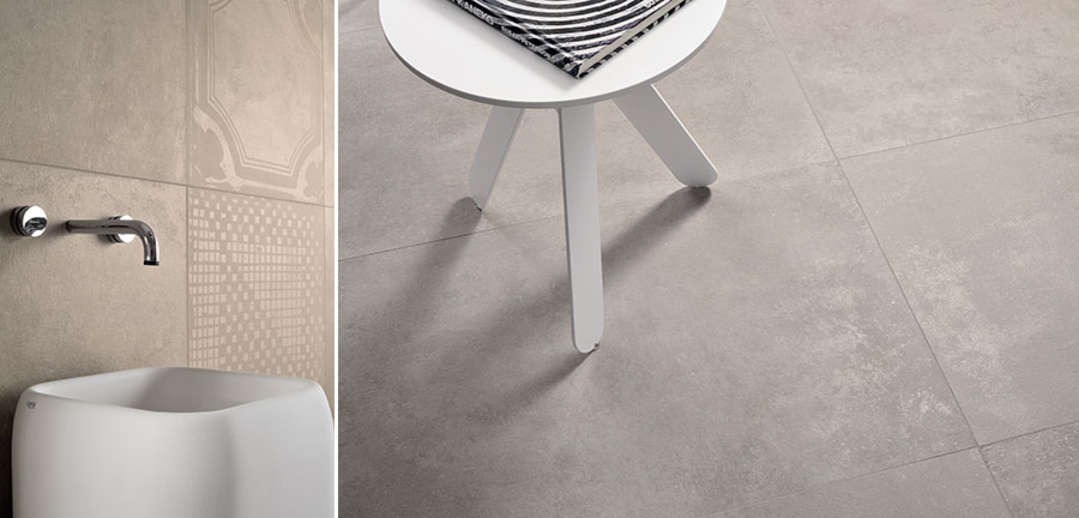

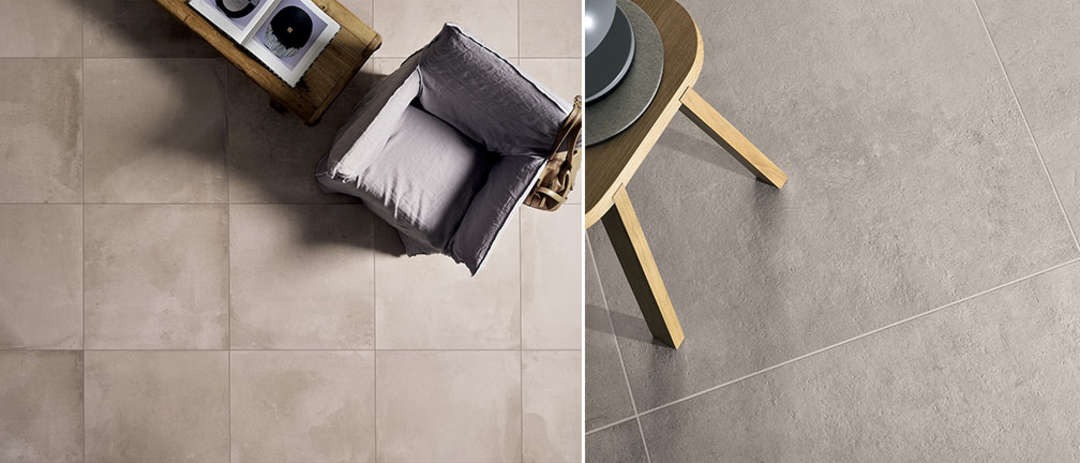

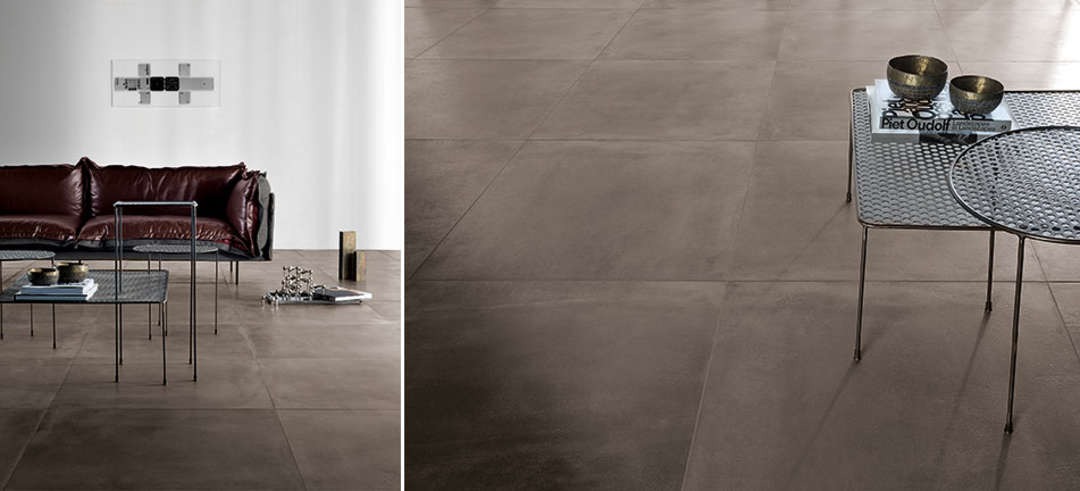

Read Architizer’s full report on Cersaie 2015 for more detail: Part One and Part Two. If this TAL Talk blog post interested you, you may want to take a look at this blog post, which covers trends from Cersaie 2014.
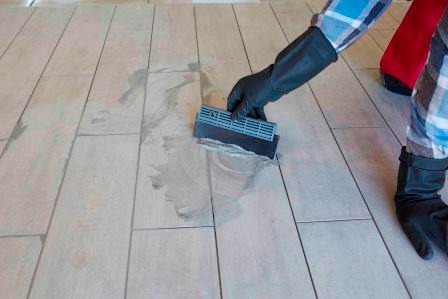

Also ensure that the spacer size you use is correct for the type of tile you have selected; the joint width between glazed ceramic floor tiles should be a minimum of 5mm wide, and a minimum of 3mm wide between porcelain tiles, including rectified porcelain tiles. To achieve the natural look, opt for grout colour that is darker than the tile itself. Click here to find out more about how to select the perfect grout colour.
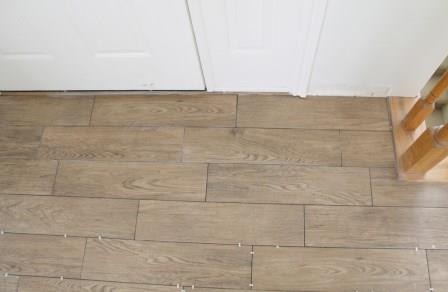

MOVEMENT JOINTS
Allowance for movement (building, thermal and moisture) must be made in all tile installations. Perimeter joints must be installed around the perimeter of all floors and around any fixtures protruding through the tile installation, such as walls, columns and stairs. Intermediate tile panel movement joints should also be installed at maximum 5 metre centres in both directions for interior surface bed applications, and maximum 3 metre centres for suspended slabs and exterior applications. These joints must be a minimum of 5mm wide, must extend through the tile and tile adhesive layers to the substrate, and must be filled with a good quality resilient joint sealant and suitable backing cord.
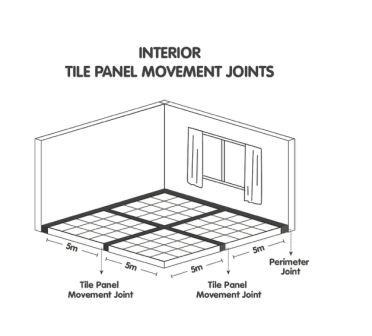

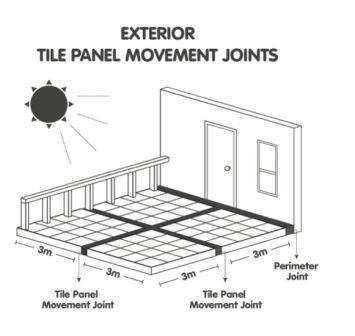

When using large format tiles (a tile with the length of at least one edge equal to/greater than 600mm, or a facial area greater than 3500cm²) there will be a smaller number of grout joints, compared with the same area of normal format tiling. As a result, less stress (movement) can be accommodated at tile joints.
Considering a wood-look tile installation? Give us a call or send usan email and we’ll give the right advice, no matter how big or small your tile installation: 0860000 TAL (825) or [email protected]. If this TAL Talk blog post interested you, you may want to take a look at this TAL Talk blog post: The 101 on wood-look tiles.


Complete the waterproofing system by replacing the water in the grout mix with TAL Bond, a latex additive, as this further increases the water resistance and flexibility of the installation.
Get the job right the first time and avoid future headaches from water seeping through and damaging the walls and floors of your home. The additional cost and effort of properly waterproofing your shower is an investment in your property and will ensure a beautiful and functional bathroom for years to come.
For more information on multi-level waterproofing systems, contact a TAL Expert on 0860 000 TAL (825), email us or watch our how-to video on YouTube for step-by-step advice on how to waterproof a shower.
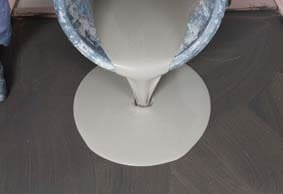

STEP 8
Roll the area using a TAL Spiked Roller to facilitate the release of any trapped air to produce a smooth surface, and to allow it to dry.
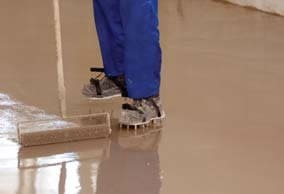

Allow the screed installation to dry for 24 hours before subjecting to foot traffic (or other trades) or installing floor coverings.


TAL MOSAICFIX is available in 20 kg and 5 kg bags from leading retail outlets.
Designed to be 100% compatible, using the TAL range of products ensures fully guaranteed multi-level tiling systems from a single source. TAL products are manufactured in South Africa to suit local climatic conditions.
If you are in any doubt, contact the TAL Technical Advisory Service on 0860 000 TAL (825), email [email protected]. Alternatively, employ the services of an experienced and skilled mosaic tiling contractor.




When replacing tiles, it is not always possible to apply the TALFIX directly to the floor, in which case apply the adhesive in a solid bed onto the back of the tile, ensuring complete coverage. Gently trace the notched side of a floor trowel through the adhesive to create ‘ridges’.


Adhesive system
When tiling onto existing tiles, it is important to only use a quick- or rapid-setting adhesive, as the existing tiles will present a dense, impervious surface, and standard-setting adhesives will take longer to dry. Too early trafficking of newly-installed tiles before the adhesive has set sufficiently can result in hollow-sounding or loose tiles.
Use TAL Tile-To-Tile quick-setting adhesive for tiling onto interior surface beds. When tiling onto suspended slabs and for external installations mix the TAL Tile-To-Tile with TAL Bond, replacing the water in the mix. Alternatively, TAL Bond Powder can be added to the adhesive mixing water.
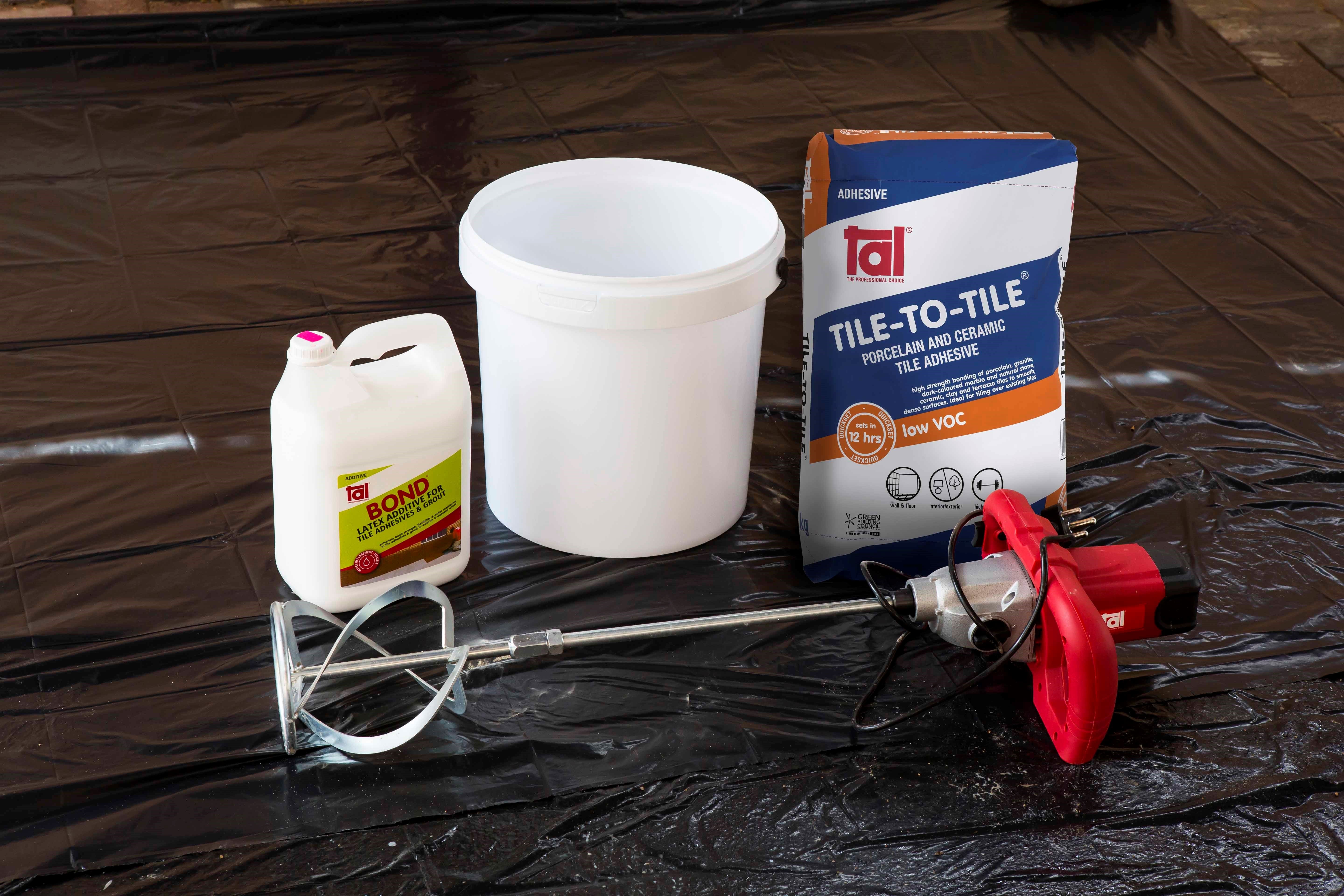

Ensure that there is a solid bed of adhesive at least 6 mm thick beneath each tile.
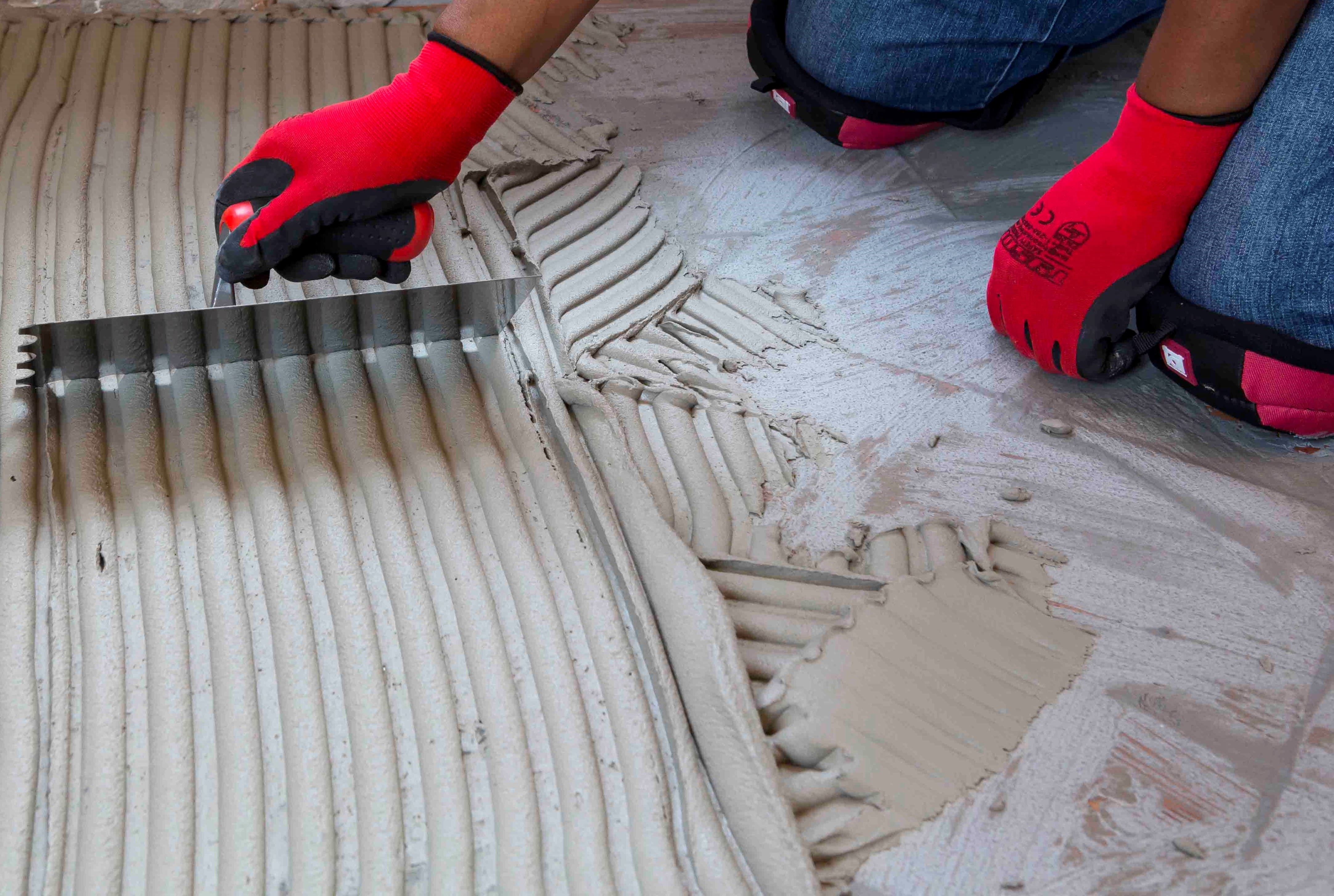

Back buttering with a thin coat of adhesive may also be required when using large-format tiles to ensure full contact with the adhesive bed.
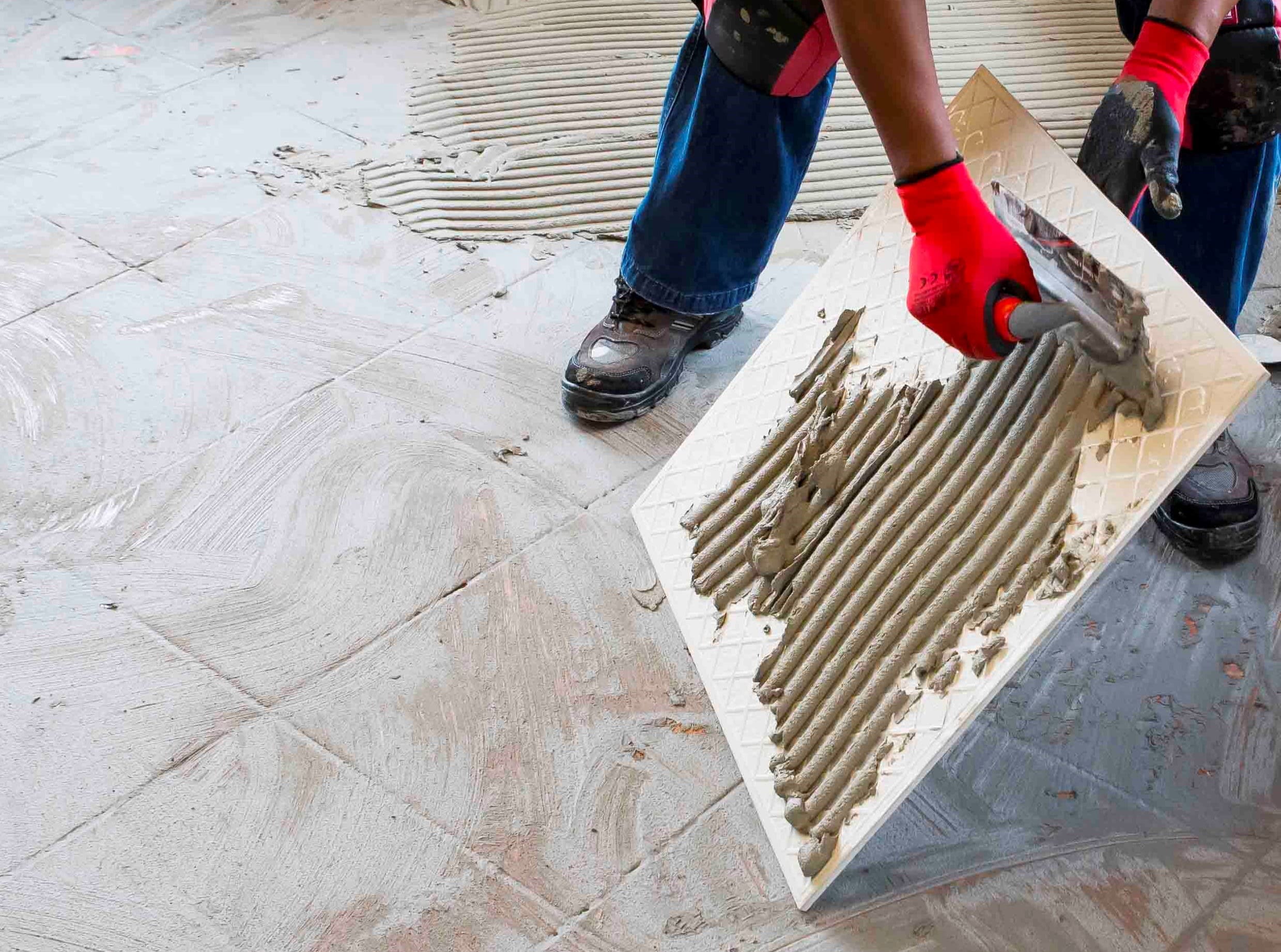

Grouting
Grouting should not be carried out until the adhesive has set sufficiently to prevent the tile installation from being disturbed during the grouting operation (always refer to the adhesive packaging for setting times). When using TAL TAL Tile-To-Tile, allow a minimum of six hours before grouting.
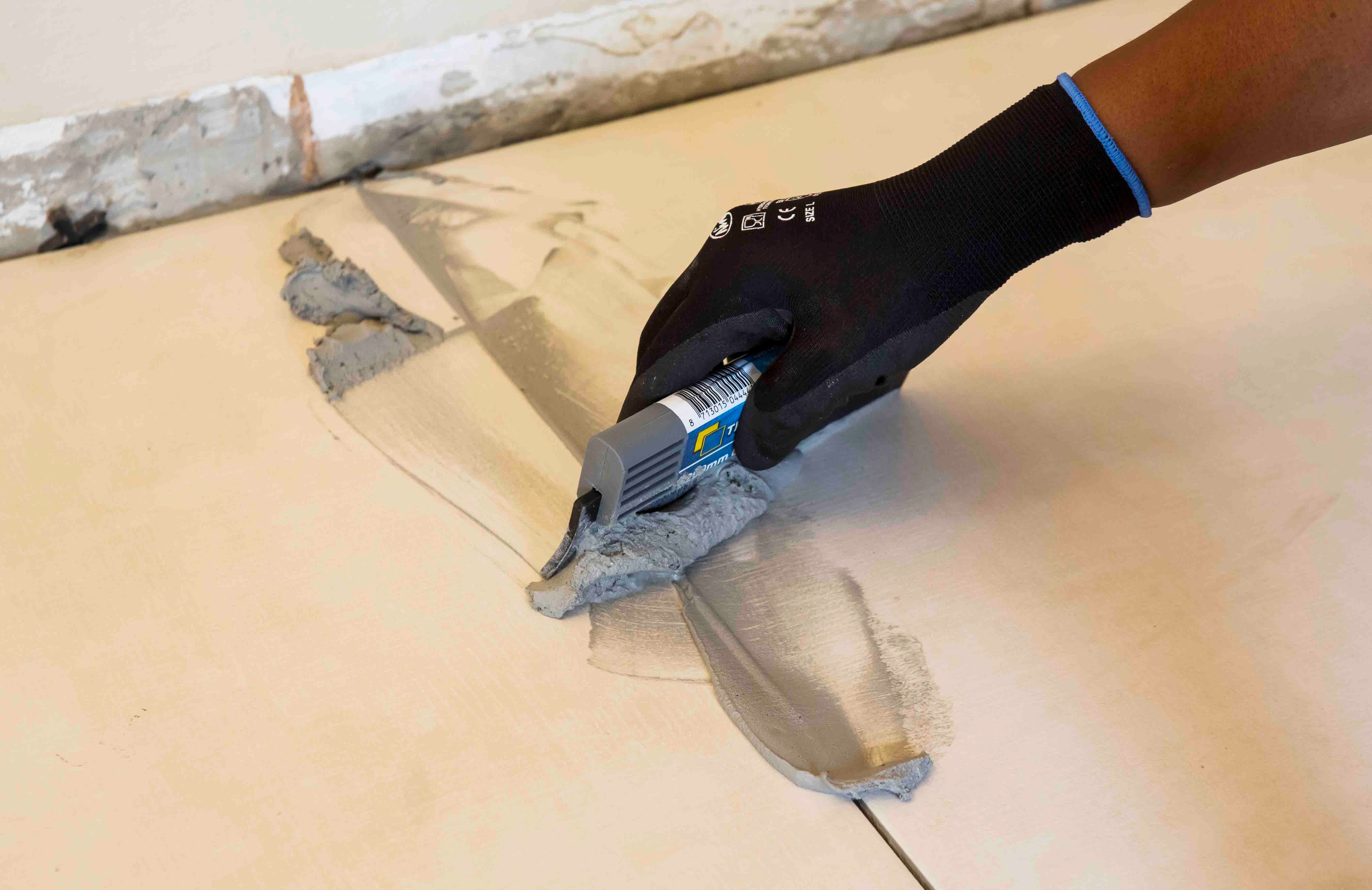

For interior surface beds, use TAL Wall & Floor Grout for filling tile joints up to 8 mm wide. TAL Quarry Grout can be used in wider joints up to 25 mm wide. On suspended slabs and for external installations, replace the water in the grout mix with TAL Bond, or add TAL Bond Powder to the grout mixing water.
Particular care must be taken to clean the grout off the tile face before it hardens completely. This is especially important when an additive such as TAL Bond or TAL Bond Powder has been used. A tile sample should be tested beforehand to ensure that no grout is absorbed through the glaze or into the tile body, thereby staining the tiles permanently.
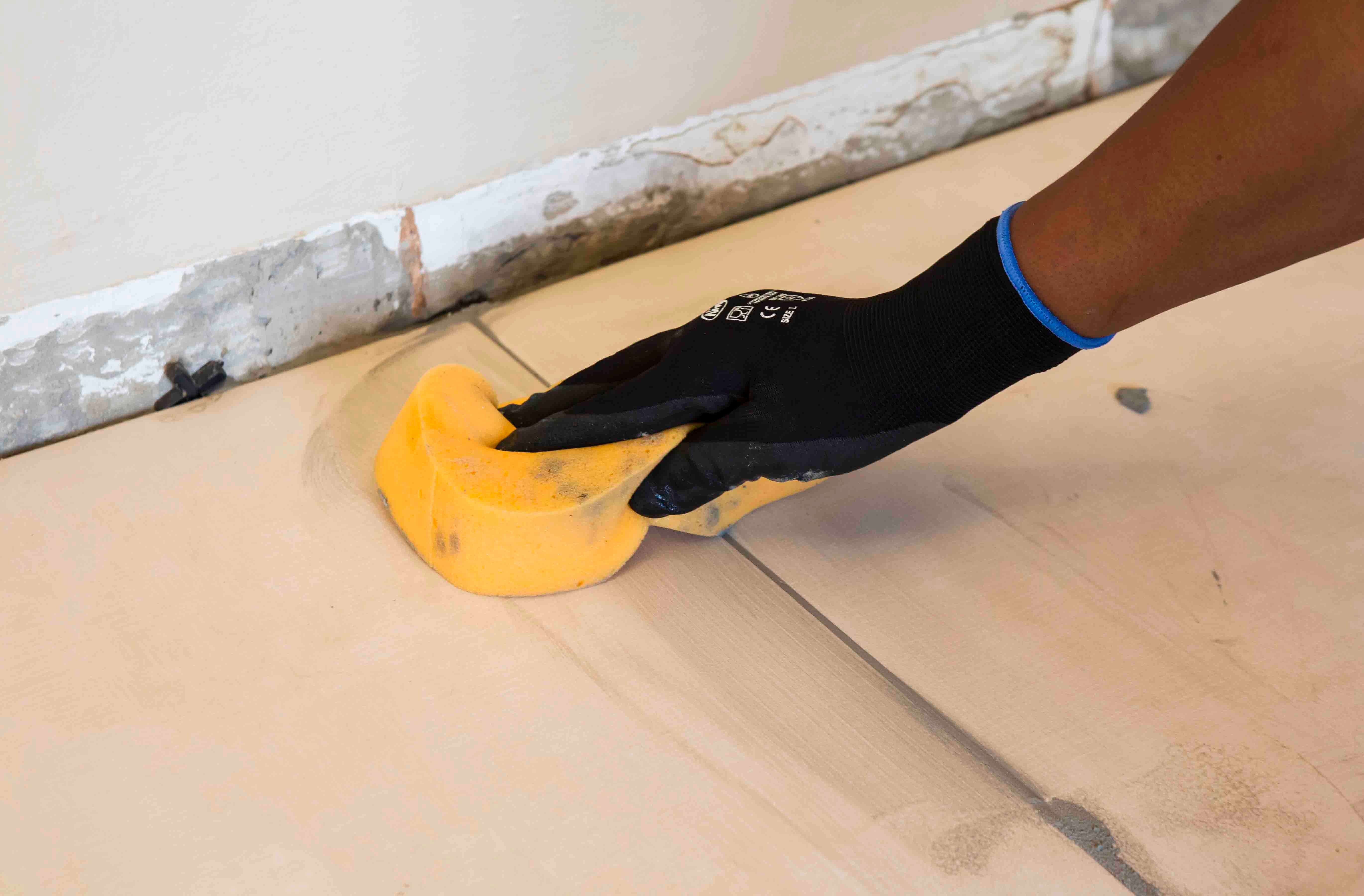

Movement joints
The lack of movement joints in tile installations is a major cause of tile failure. When tiling over existing tiles, the existing structural and movement joints must be maintained in the new tile installation. The movement joints should be at least 5 mm wide and extend through the adhesive and both tile layers.
